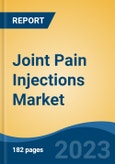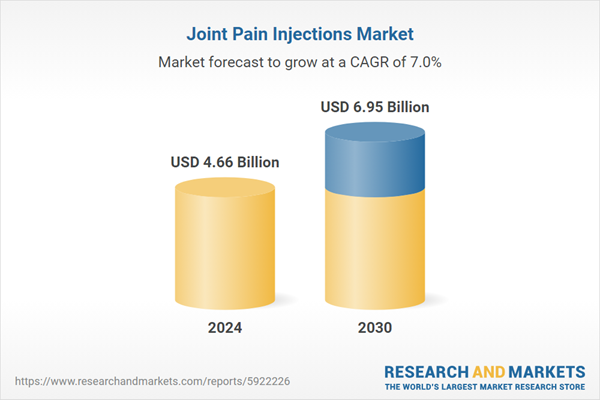Speak directly to the analyst to clarify any post sales queries you may have.
10% Free customizationThis report comes with 10% free customization, enabling you to add data that meets your specific business needs.
Key Market Drivers
Rising Obesity Rates
The growing prevalence of obesity is a key driver propelling the demand for joint pain injections worldwide. As obesity rates rise, so does the burden on weight-bearing joints, increasing the risk of joint disorders like osteoarthritis. According to the World Health Organization, the number of obese individuals has significantly increased over the past few decades, with over 650 million people classified as obese in 2016. Excess weight leads to greater stress on joints, resulting in chronic pain and inflammation that often necessitates medical intervention. Joint pain injections offer an effective solution for managing this discomfort and are increasingly sought after as part of long-term pain management strategies in obese populations.Key Market Challenges
Reimbursement Issues
Reimbursement limitations pose a significant barrier to the widespread adoption of joint pain injections. In many healthcare systems, inadequate insurance coverage discourages patients from opting for injection-based therapies due to high out-of-pocket expenses. This is particularly true for newer or biologic-based treatments, which tend to be more expensive. As a result, despite clinical efficacy, limited reimbursement frameworks can hinder market growth by restricting patient access to advanced treatment options.Key Market Trends
Advancements in Biologics and Regenerative Therapies
Technological progress in biologics and regenerative medicine is shaping a major trend in the joint pain injections market. Treatments such as platelet-rich plasma (PRP) and placental tissue matrix (PTM) injections are gaining attention for their ability to promote tissue repair and deliver extended relief from joint pain. These therapies utilize the patient’s own biological components or donor-derived materials to regenerate damaged tissues, offering an innovative approach to joint restoration. Continued R&D in this area is expected to yield next-generation injectable solutions that offer superior outcomes and durability, further enhancing patient appeal and clinical adoption.Key Players Profiled in this Joint Pain Injections Market Report
- Anika Therapeutics Inc
- Bioventus LLC
- Ferring Pharmaceuticals Inc
- Sanofi SA
- Pfizer Inc
- Eli Lilly & Co
- Flexion Therapeutics Inc
- Teva Pharmaceutical Industries Ltd
- Zimmer Biomet Holdings, Inc.
Report Scope:
In this report, the Global Joint Pain Injections Market has been segmented into the following categories, in addition to the industry trends which have also been detailed below:Joint Pain Injections Market, by Type of Injection:
- Steroid Joint Injections
- Hyaluronic Acid Injections
- Platelet-rich Plasma (PRP) Injections
- Placental Tissue Matrix (PTM) Injections
- Others
Joint Pain Injections Market, by Application:
- Shoulder & Elbow
- Knee & Ankle
- Spinal Joints
- Hip Joint
- Others
Joint Pain Injections Market, by Region:
- North America
- United States
- Canada
- Mexico
- Europe
- Germany
- United Kingdom
- France
- Italy
- Spain
- Asia-Pacific
- China
- Japan
- India
- Australia
- South Korea
- South America
- Brazil
- Argentina
- Colombia
- Middle East & Africa
- South Africa
- Saudi Arabia
- UAE
- Kuwait
Competitive Landscape
Company Profiles: Detailed analysis of the major companies present in the Global Joint Pain Injections Market.Available Customizations:
With the given market data, the publisher offers customizations according to a company's specific needs. The following customization options are available for the report.Company Information
- Detailed analysis and profiling of additional market players (up to five).
This product will be delivered within 1-3 business days.
Table of Contents
Companies Mentioned
The leading companies profiled in this Joint Pain Injections market report include:- Anika Therapeutics Inc
- Bioventus LLC
- Ferring Pharmaceuticals Inc
- Sanofi SA
- Pfizer Inc
- Eli Lilly & Co
- Flexion Therapeutics Inc
- Teva Pharmaceutical Industries Ltd
- Zimmer Biomet Holdings, Inc.
Table Information
| Report Attribute | Details |
|---|---|
| No. of Pages | 185 |
| Published | May 2025 |
| Forecast Period | 2024 - 2030 |
| Estimated Market Value ( USD | $ 4.66 Billion |
| Forecasted Market Value ( USD | $ 6.95 Billion |
| Compound Annual Growth Rate | 7.0% |
| Regions Covered | Global |
| No. of Companies Mentioned | 10 |









